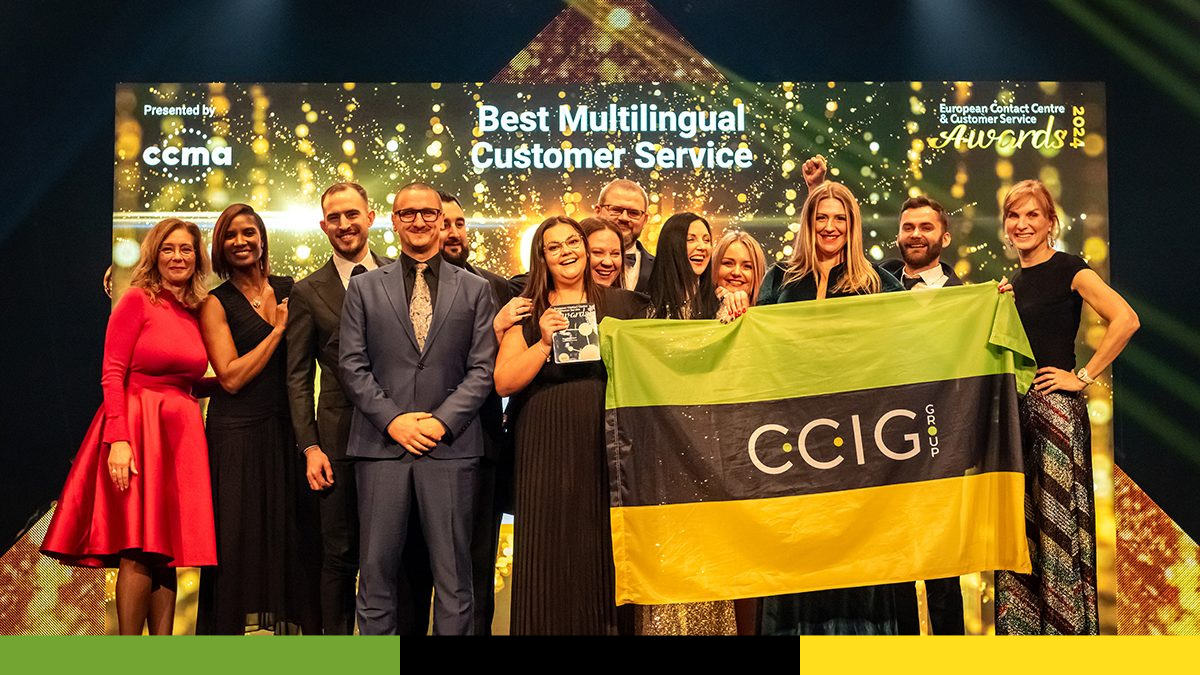Market Research and Research Methods Used in Contact Centers

Market research is often associated with various surveys and polls aimed at collecting data, valuable insights, understanding market demand, and identifying consumer buying habits, needs and wants.
Many business owners wonder which type of market research is the most effective and what research methods deliver the best results. That’s why in today’s article, we’ll explore the challenges and solutions we apply at our contact center when conducting research for our Clients. And let’s clarify one thing right away – contrary to popular belief, contact centers don’t rely solely on telephone surveys!
Definition of Market Research
Let’s start with the basics – what exactly is market or marketing research? To speak professionally about the types of marketing research and the methods used, it’s important to first understand the definition. According to Dr. Iwona Eschner, marketing research is “a multi-stage, pre-designed process involving the collection of data directly related to the organization’s marketing situation (or a decision-making problem of a marketing nature), followed by analysis and presentation.” The results of marketing research form a crucial part of a company’s marketing strategy, as they provide insights into customer preferences and prevailing market trends.
The Role of Marketing Research
Marketing research enables producers to make informed marketing and sales decisions based on collected data. It also allows us to create a profile of the target audience, which may evolve into a loyal customer base over time. Marketing research helps answer key questions related to:
- demand for specific products or services,
- the scale and nature of competition,
- the profitability of sales,
- identification of current trends and customer needs,
- development of the company’s marketing strategy,
- existing errors and challenges,
- the decision-making process.
Types of Marketing Research
There are many different ways to classify marketing research. However, most sources divide it into two (or more) complementary types, based on specific criteria. For example, we can distinguish between: primary and secondary research, complete and partial research, quantitative and qualitative research, online and offline research, as well as continuous, periodic, and one-time research (based on frequency).
Primary and Secondary Market Research
Primary research involves collecting data directly from respondents, for example, through surveys. The creation of the questionnaire and the collection of data are carried out by the researcher, either in the field or remotely. A report is then prepared based on the collected information. This type of research is frequently used in contact centers.
Secondary research, on the other hand, relies on the analysis of data that has already been gathered. The internet is full of valuable information sources that can support marketing efforts. These may include internal company data or publicly available external statistical reports. The downside of secondary research is its lower accuracy and relevance compared to current conditions.
Quantitative and Qualitative Research
This classification is based on the type of information being sought. Quantitative research focuses on gathering large amounts of data necessary for generating statistical analysis. The larger the sample size, the more accurate the research results.
Qualitative research, in contrast, aims to analyze current market trends. It is most commonly conducted through interviews or longer, in-depth conversations – a method often used in contact centers. This type of research provides insights into customer preferences and their decision-making processes.
Continuous, Periodic, and One-Time Research
This division is based on the duration of the research process. Continuous research is conducted on a selected group without interruption. Periodic research is carried out in cycles, at specific intervals. One-time research is conducted only once, at a particular moment. Both periodic and one-time research are useful for evaluating market acceptance of a new product or product features and its long-term viability.
Research Categorized by Purpose
There are various types of marketing research that can be applied depending on specific business needs. Here are a few examples:
- Market Research – focuses on gathering data about the market and competitors. It can be conducted via phone surveys, telephone interviews, or online research.
- Product Research – provides insights into customer preferences related to products or services. Methods include phone surveys, telephone interviews, or online research.
- Pricing Research – aims to collect data on customer preferences regarding product or service pricing. It is commonly done through phone or online methods.
- Competitor Analysis – gathers information about competitor activities, also conducted via phone or online surveys and interviews.
- Advertising and Promotion Research – evaluates the effectiveness of advertising and promotional campaigns using phone surveys, telephone interviews, or online research.
- Customer Loyalty Research – focuses on understanding customer loyalty to a brand or product, conducted through phone surveys, interviews, or online tools.
Which Type of Marketing Research Should You Choose? To select the right type of research and the most effective method, a business owner should first identify their business objectives and target audience. The next step is to define the questions that need to be answered and then choose the research method best suited to those goals.
Read more: Customer Service Quality impact on Sales
Marketing Research Methods Used in Contact Centers
In contact centers, various types of marketing research are based on telephone or online communication. As a result, the methodology excludes face-to-face interaction. Within this context, we can distinguish between indirect survey methods (used in call centers) and direct survey methods.
Indirect Survey Methods involve obtaining responses to questions posed either verbally or in writing, typically using mass communication tools such as media. These methods offer several advantages, including high reliability, greater confidence that the questionnaire will be completed correctly, and increased comfort and convenience for the respondent. Customers often find it easier to respond when they do not see the interviewer.
Direct Survey Methods, as the name suggests, involve gathering information directly from the respondent. These can take both verbal and written forms but do not require the use of media. Interviewers maintain greater control over the data collection process, while respondents tend to feel less anonymous. Examples of direct methods include unstructured interviews (without a strictly defined questionnaire) and in-person surveys.
The primary research methods used in contact centers are telephone interviews and online surveys.
Telephone Interview
Telephone interviews are characterized by the use of electronic questionnaires, short completion times, and relatively low costs. Modern contact centers often use the CATI method (Computer-Assisted Telephone Interviewing). This technique is based on a phone conversation during which the respondent answers questions and the interviewer inputs the data into a computer script. The script automates the questionnaire using various filters and logic paths.
Online Survey
Online surveys are also widely used in contact centers. This method involves distributing questionnaires to a targeted sample group through channels such as email or by sharing a direct link. The benefits of online surveys include time savings for interviewers, ease of use for respondents, cost-effectiveness, and the speed at which data can be collected.
How to Conduct Marketing Research Using a Telephone Survey?
In contact centers, the most effective research methods are telephone surveys and online research. Telephone surveys involve conducting a phone conversation with a customer, during which questions are asked about their needs and preferences. To conduct an effective telephone survey, the following guidelines should be followed:
- Define the research objective – determine what information you want to gather.
- Choose the appropriate target group – identify your target customers and contact the right individuals.
- Prepare the questions – create a list of questions to ask respondents. Ensure that the questions are clearly worded and easy to understand..
- Contact the respondents – before conducting the survey, ensure that you have received consent from respondents to conduct the phone interview.
- Conduct the survey – carry out the survey according to the prepared script and ask questions in the designated order. Remember to listen carefully to the respondents’ answers and allow them to explain their responses.
- Analyze the data – after completing the survey, analyze the respondents’ answers and draw conclusions.
- Publish the results – once the survey is complete, publish the results in the form of a report or presentation. You can also share the results with your clients or business partners.
Read more: How to conduct a survey with customers?
Example of a Marketing Research in a Contact Center
An example of marketing research in a contact center using a telephone survey may proceed as follows:
- Research Objective: The objective is to measure customer satisfaction with the service they received during their interaction with the company.
- Target Group: The target group consists of customers who have contacted the company within the last three months.
- The following questions were prepared:
- Were you satisfied with the level of service you received during your conversation with the agent?
- Was the agent polite and helpful?
- Did you receive answers to all your questions?
- Was the agent sufficiently competent?
- Were you satisfied with the waiting time for the call?
- The respondents were contacted, informed about the purpose of the survey, and consent was obtained to proceed with the interview.
- The surveys were conducted according to the prepared script, with questions asked in the designated order.
- After completing the surveys, the responses were analyzed, and conclusions regarding customer satisfaction with the service were drawn.
- The results were published in a research report and shared with managers and agents to improve service quality and increase customer satisfaction.
Read more: Customer Service Standards on the phone – 8 Golden Rules for increasing customer experience
What Will I Gain from Marketing Research?
Conducting marketing research and choosing the appropriate research method will help companies understand the needs and expectations of their customers better, which in turn allows for better alignment of products or services with those needs.
Marketing research is essential for understanding consumer needs and preferences, which forms the foundation of an effective marketing strategy. In today’s competitive market, businesses must employ a variety of precise research methods to truly understand their customers and respond effectively. Methods such as CATI (Computer-Assisted Telephone Interviewing) surveys offered by contact centers are highly efficient and accurate, allowing for the collection of valuable data in a short amount of time and at relatively low costs.
By using CATI technology, businesses can not only better understand their target audience but also quickly adapt their marketing strategies and product offerings to changing market trends and preferences. We encourage you to take advantage of our CATI research services. We can help you understand your customers, and you will learn how to tailor your products or services to meet market and customers demands. Take care of your market success today. Don’t wait for the future – start shaping it now with our marketing research services.
BIBLIOGRAPHY
- I.Escher, Badania marketingowe (rozdział III) [w:] Marketing. Podręcznik akademicki, praca zbiorowa pod red. K.Andruszkiewicza, TNOiK, Toruń, 2011, s. 95- 144.
- Stanisław Kaczmarczyk, Klasyfikacja metod zbierania danych ze źródeł pierwotnych w badaniach marketingowych, Wydawnictwo Uniwersytetu Ekonomicznego w Katowicach, Katowice 2014
- Piotr Siuda, Ankieta internetowa: zalety i wady – rekapitulacja, WN Katedra, Bydgoszcz 2016
- Wojciech Jabłoński, Sytuacje trudne w wywiadzie telefonicznym, Łódzkie Towarzystwo Naukowe, Stowarzyszenie, Łódź 2012
- S. Kaczmarczyk, Badania marketingowe. Metody i techniki, PWE, Warszawa 1995, s. 180
- Jabłoński W. 2016, Wywiad telefoniczny ze wspomaganiem komputerowym (CATI). Działania ankieterskie w call centers, Wydawnictwo Uniwersytetu Łódzkiego nr 1



